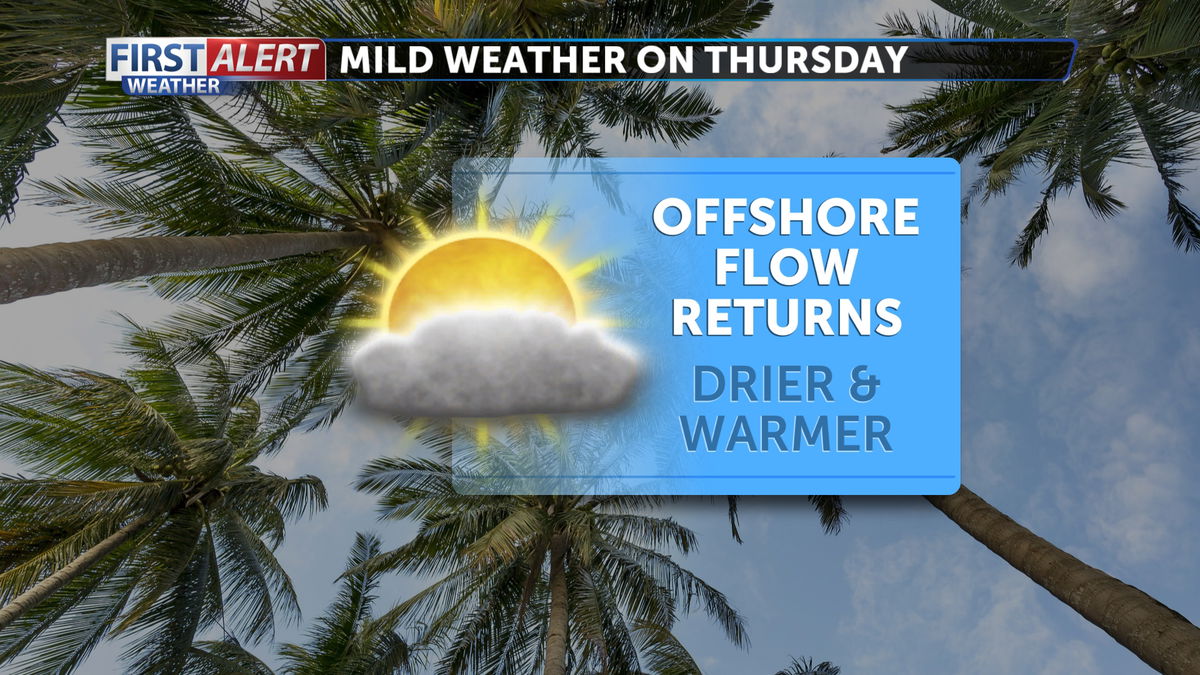Understanding The Shift To Drier Weather Conditions

Table of Contents
The Role of Climate Change in Drier Weather Conditions
Climate change is a primary driver of the shift towards drier weather conditions. The increasing concentration of greenhouse gases in the atmosphere traps heat, leading to a rise in global temperatures. This warming effect significantly alters weather patterns, resulting in increased evaporation and reduced precipitation in many regions. The mechanism is complex but fundamentally involves:
- Increased Temperatures Lead to Higher Evaporation Rates: Higher temperatures accelerate the evaporation of water from land and water bodies, leading to drier soils and reduced water availability.
- Changes in Atmospheric Circulation Patterns Alter Rainfall Distribution: Global warming disrupts established atmospheric circulation patterns, altering rainfall distribution and leading to more intense and frequent droughts in some areas and increased rainfall in others.
- Melting Glaciers and Ice Caps Reduce Freshwater Availability: The melting of glaciers and ice caps, accelerated by rising temperatures, reduces the long-term availability of freshwater resources, exacerbating water scarcity in already arid regions.
- More Frequent and Intense Heatwaves Exacerbate Drought Conditions: More frequent and intense heatwaves further dry out the land, leading to more severe and prolonged droughts.
Regions like the Mediterranean, parts of Africa, and the southwestern United States are already experiencing increased aridity due to climate change, highlighting the urgency of addressing this global challenge. The consequences of this aridification are far-reaching and devastating.
Deforestation and Land Degradation's Contribution
Beyond climate change, deforestation and land degradation significantly contribute to drier weather conditions. The removal of forests disrupts natural water cycles and reduces rainfall. Trees play a crucial role in regulating water cycles through transpiration, a process where water is absorbed by the roots, transported through the plant, and released into the atmosphere as water vapor. Deforestation eliminates this crucial process, leading to:
- Trees Regulate Water Cycles Through Transpiration: The loss of trees reduces atmospheric moisture, impacting rainfall patterns.
- Loss of Vegetation Leads to Increased Soil Erosion and Reduced Water Retention: Bare soil is more susceptible to erosion, reducing its capacity to retain water.
- Unsustainable Farming Practices Deplete Soil Moisture: Intensive agriculture practices often deplete soil moisture and leave the land vulnerable to desertification.
- Urban Heat Island Effect Exacerbates Drought Conditions in Cities: The concentration of buildings and infrastructure in urban areas creates a "heat island effect," increasing temperatures and exacerbating drought conditions within cities.
Unsustainable land management practices, including overgrazing and poor irrigation techniques, further contribute to land degradation and increased aridity.
Impacts of Drier Weather Conditions
The impacts of drier weather conditions are far-reaching and severe, affecting agriculture, water resources, ecosystems, and human societies. The consequences include:
- Reduced Agricultural Productivity Leading to Food Shortages: Droughts severely impact crop yields, leading to food insecurity and economic hardship for farmers and communities.
- Increased Frequency and Intensity of Wildfires: Dry conditions create ideal circumstances for wildfires, resulting in devastating losses of life, property, and natural habitats.
- Water Stress Impacting Human Populations and Ecosystems: Water scarcity leads to competition for resources, conflicts, and threats to human health and biodiversity.
- Economic Losses Due to Damage to Infrastructure and Reduced Agricultural Output: Droughts cause significant economic losses due to damage to infrastructure, reduced agricultural yields, and increased costs associated with water management.
- Increased Risk of Conflict Over Scarce Water Resources: Competition for dwindling water resources can lead to conflicts between communities and nations.
Mitigation and Adaptation Strategies
Addressing the shift towards drier weather conditions requires a two-pronged approach: mitigation and adaptation. Mitigation focuses on reducing greenhouse gas emissions to slow climate change, while adaptation focuses on strategies to cope with the impacts of drier weather. Key strategies include:
- Transition to Renewable Energy Sources: Reducing our reliance on fossil fuels is crucial for mitigating climate change.
- Implementation of Carbon Capture and Storage Technologies: These technologies can help remove carbon dioxide from the atmosphere.
- Development of Drought-Resistant Crops and Livestock Breeds: Developing crops and livestock that can tolerate drier conditions is crucial for food security.
- Improved Water Management and Conservation Techniques: Efficient irrigation systems and water conservation practices can help to reduce water consumption.
- Sustainable Land and Forest Management Practices: Reforestation, afforestation, and sustainable agricultural practices are essential for restoring degraded lands and protecting water resources.
Conclusion: Understanding and Addressing the Shift to Drier Weather Conditions
The increasing prevalence of drier weather conditions is a complex challenge driven by climate change, deforestation, and unsustainable land management practices. The impacts on agriculture, water resources, ecosystems, and human well-being are significant and far-reaching. Addressing this growing threat requires urgent action through both mitigation and adaptation strategies. We must transition to a more sustainable future by reducing greenhouse gas emissions, implementing water conservation measures, promoting sustainable land management, and developing drought-resistant crops. Learn more about drought management and climate change adaptation. Support sustainable practices and advocate for climate action to mitigate the effects of drier weather conditions and build resilience to future changes. Let's work together to combat the global threat of drier weather and create a more sustainable and resilient future for all.

Featured Posts
-
 Pop Suisse Stephane Une Artiste Romande A Paris
May 21, 2025
Pop Suisse Stephane Une Artiste Romande A Paris
May 21, 2025 -
 New Texas Bill Could Significantly Impact Teen Social Media Use
May 21, 2025
New Texas Bill Could Significantly Impact Teen Social Media Use
May 21, 2025 -
 Big Bear Ai Stock Performance And Future Outlook
May 21, 2025
Big Bear Ai Stock Performance And Future Outlook
May 21, 2025 -
 Problemen Met Online Betalingen Bij Abn Amro Opslag
May 21, 2025
Problemen Met Online Betalingen Bij Abn Amro Opslag
May 21, 2025 -
 Vybz Kartel Electrifies Brooklyn With Sold Out Concerts
May 21, 2025
Vybz Kartel Electrifies Brooklyn With Sold Out Concerts
May 21, 2025
Latest Posts
-
 Athena Calderones Extravagant Rome Milestone Celebration Details And Highlights
May 22, 2025
Athena Calderones Extravagant Rome Milestone Celebration Details And Highlights
May 22, 2025 -
 Sound Perimeter How Music Unites Us
May 22, 2025
Sound Perimeter How Music Unites Us
May 22, 2025 -
 Athena Calderone Celebrates A Milestone In Rome A Look At The Event
May 22, 2025
Athena Calderone Celebrates A Milestone In Rome A Look At The Event
May 22, 2025 -
 Lazios Late Fight Secures 1 1 Draw Against 10 Man Juventus
May 22, 2025
Lazios Late Fight Secures 1 1 Draw Against 10 Man Juventus
May 22, 2025 -
 Me Bwtshytynw Thlatht Wjwh Jdydt Fy Mntkhb Amryka
May 22, 2025
Me Bwtshytynw Thlatht Wjwh Jdydt Fy Mntkhb Amryka
May 22, 2025
